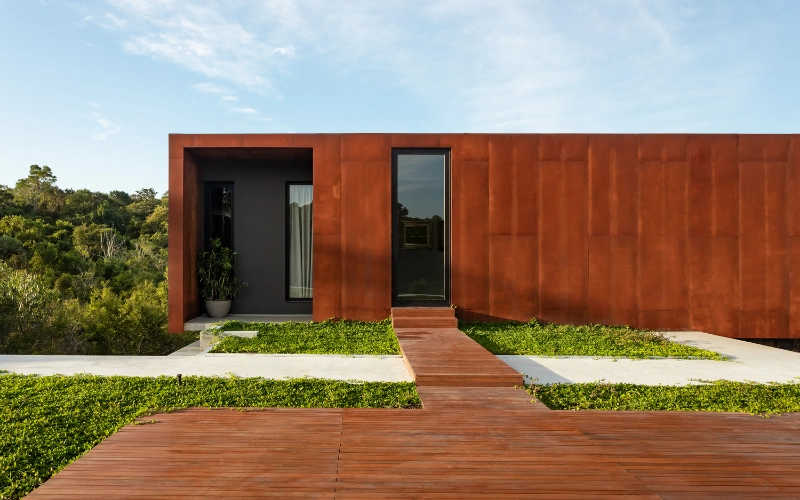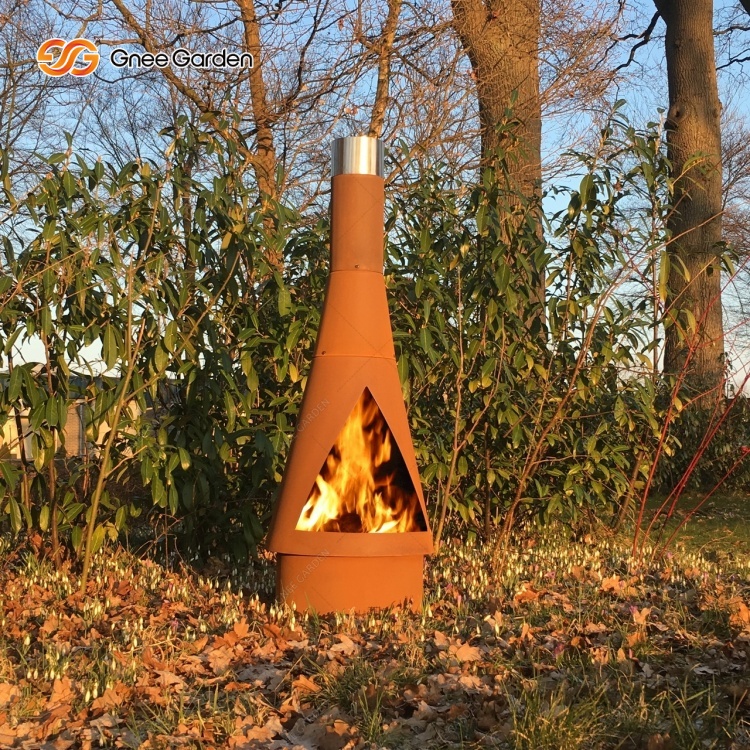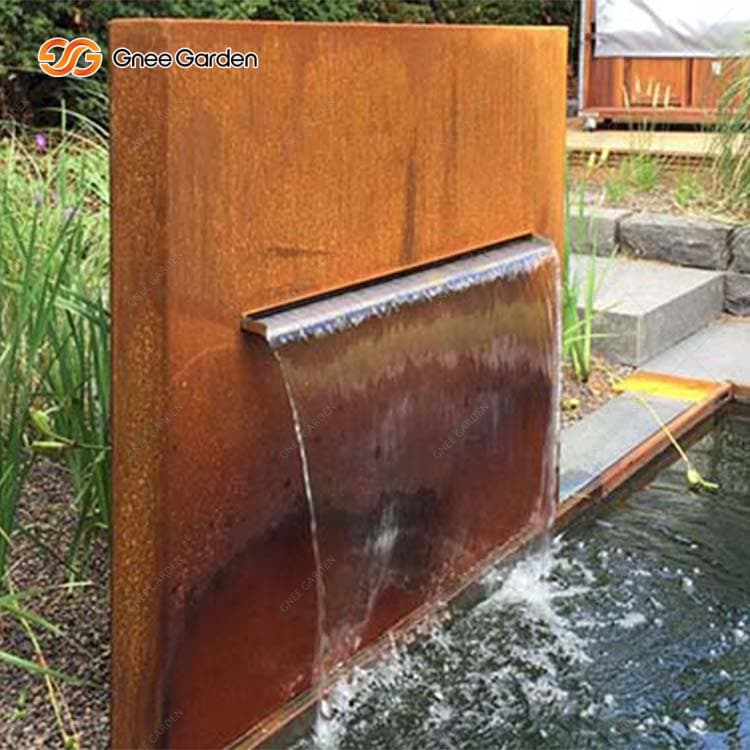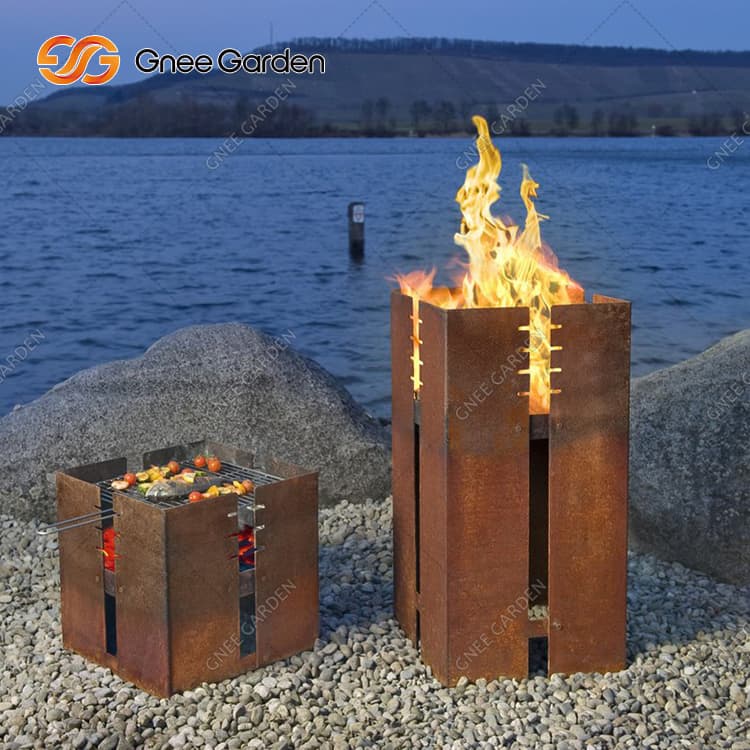Factors influencing the longevity of corten steel when exposed to the elements
When employing corten steel in an outdoor setting, numerous factors come into play that can influence its lifespan and overall durability. These factors encompass the climate and weather conditions, the degree of exposure to moisture and humidity, as well as the presence of pollutants and chemicals in the surrounding environment.
Climate and weather conditions
The climate and weather conditions prevailing in a specific locale can exert a significant impact on the lifespan of corten steel. Extreme temperatures, frequent cycles of freezing and thawing, and prolonged exposure to intense sunlight can hasten the process of deterioration. In regions characterized by copious rainfall or high levels of humidity, corten steel may prove more vulnerable to corrosion and rusting.
Exposure to moisture and humidity
The presence of moisture and humidity assumes a pivotal role in determining the lifespan of corten steel. Prolonged exposure to water or moisture can prompt the formation of a layer of rust upon the surface of the steel. While this rust layer serves as a protective shield and imparts corten steel with its distinctive appearance, excessive moisture can expedite the process of corrosion and diminish its longevity.
Presence of pollutants and chemicals in the environment
The existence of pollutants and chemicals within the surrounding environment can likewise exert an influence upon the lifespan of corten steel. Locations characterized by industrial activities or areas with elevated levels of air pollution may subject corten steel to corrosive substances, thereby accelerating the process of rusting. Furthermore, exposure to chemicals such as acids or alkalis can also impact the structural integrity of corten steel.

Typical lifespan of corten steel in different outdoor environments
Weathering steel, commonly known as corten steel, is celebrated for its enduring strength and resistance to rust. However, the duration of its existence can fluctuate depending on the external surroundings it encounters. In this discourse, we shall delve into the customary lifespan of corten steel within various outdoor environments.
Coastal areas with high salt content
Coastal regions imbued with an abundance of salt particles in the atmosphere possess the potential to significantly impact the lifespan of corten steel. These minuscule salt particles, swirling in the air, hasten the process of corrosion, thereby potentially curtailing the steel’s longevity. In such environs, the endurance of corten steel may persist for a span of approximately 20-30 years before exhibiting noticeable signs of substantial deterioration. To prolong its existence, it is advisable to undertake periodic maintenance, including the removal of salt deposits and the application of protective coatings.
Urban areas with air pollution
Within urban landscapes, where air pollution levels are elevated, corten steel may also experience a diminished lifespan. The pollutants lingering in the atmosphere, such as sulfur dioxide and nitrogen oxide, possess the propensity to react with the steel’s surface, thereby expediting the process of corrosion. In these surroundings, the customary lifespan of corten steel can vary between 25-35 years. Regular cleansing endeavors and the application of protective coatings can serve to alleviate the deleterious effects of pollution and thereby protract its durability.
Rural areas with minimal pollution
Conversely, in rural settings blessed with minimal pollution, corten steel tends to endure for a lengthier duration in comparison to its coastal and urban counterparts. The absence of copious salt content and air pollutants permits the steel to weather at a more leisurely pace. In such idyllic realms, corten steel may persist for approximately 30-40 years before evincing substantial signs of corrosion. Nonetheless, it is prudent to engage in regular maintenance and adopt protective measures to ensure the perpetuation of its longevity.
The Importance of Maintenance and Care in Preserving the Lifespan of Corten Steel
When one considers the task of maintaining and caring for corten steel, it becomes apparent that there exist several crucial steps that must be taken to ensure its longevity. The regular cleaning and removal of debris play a pivotal role in preventing the accumulation of dirt and other contaminants that may hasten the onset of corrosion. This can be accomplished through the gentle use of a soft brush or cloth, accompanied by the application of a mild detergent, and followed by a thorough rinsing with water.
Moreover, the application of protective coatings, such as clear lacquer or wax, serves as an additional layer of defense against the capricious elements. However, it is important to note that these coatings must be diligently reapplied at regular intervals to maintain their effectiveness. Neglecting this duty may result in a compromised shield, leaving the corten steel vulnerable to the ravages of time.
Furthermore, it is imperative to ensure proper drainage to prevent the accumulation of water, as prolonged exposure to moisture can expedite the rusting process. To this end, it is essential that corten steel installations possess adequate drainage systems in place, effectively redirecting water away from the surface. By attending to this vital aspect, one can significantly prolong the lifespan of corten steel, ensuring its enduring beauty for years to come.

Frequently Asked Questions about the Lifespan of Corten Steel Outdoors
1. How long will corten steel last outside?
The lifespan of corten steel when exposed to the elements can vary depending on several factors. These include the climate and weather conditions, the degree of exposure to moisture and humidity, and the presence of pollutants and chemicals in the environment. In coastal areas with high salt content, corten steel may last approximately 20-30 years before showing signs of substantial deterioration. In urban areas with air pollution, its lifespan can range between 25-35 years. In rural areas with minimal pollution, corten steel may endure for around 30-40 years.
2. How do climate and weather conditions affect the longevity of corten steel?
The climate and weather conditions prevailing in a specific locale can significantly impact the lifespan of corten steel. Extreme temperatures, frequent cycles of freezing and thawing, and prolonged exposure to intense sunlight can hasten the process of deterioration. Regions with copious rainfall or high levels of humidity may make corten steel more vulnerable to corrosion and rusting.
3. What role does exposure to moisture and humidity play in the lifespan of corten steel?
Exposure to moisture and humidity is crucial in determining the lifespan of corten steel. Prolonged exposure to water or moisture can prompt the formation of a layer of rust, which serves as a protective shield but excessive moisture can expedite corrosion and diminish longevity.
4. What are some examples of corten steel structures with enduring outdoor longevity?
Corten steel is widely used in architectural facades, landscape features, sculptures, and outdoor furniture. Examples include the Chicago Picasso sculpture, the High Line park in New York City, the “Cloud Gate” sculpture in Chicago’s Millennium Park, and the “Angel of the North” in England. Corten steel benches, tables, planters, and fire pits are also popular choices for outdoor spaces.
5. What are the potential applications and benefits of corten steel?
Corten steel is commonly used in architectural and structural projects due to its durability and unique aesthetic appeal. It is also favored for landscaping and garden design, as well as industrial and outdoor art installations. Its resistance to corrosion and minimal maintenance requirements make it a long-lasting choice for various environments.






